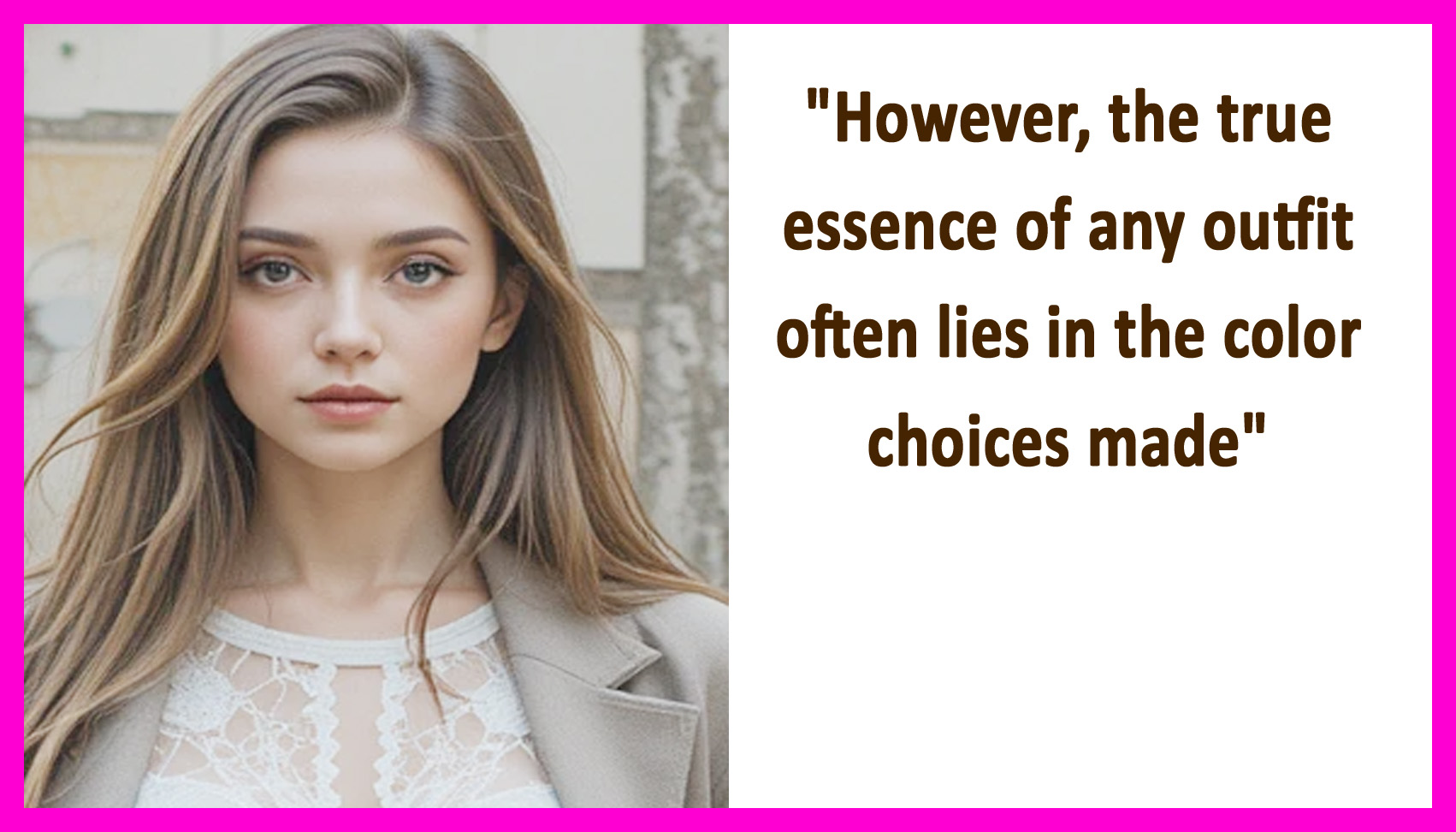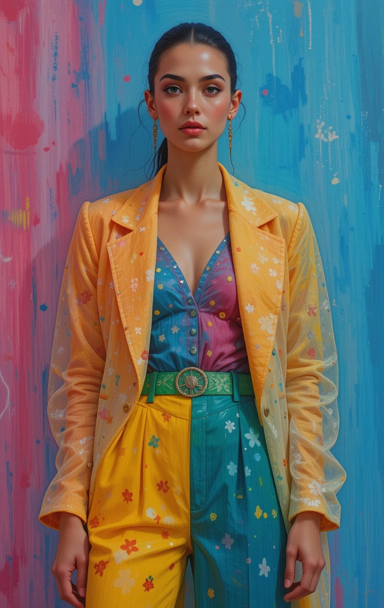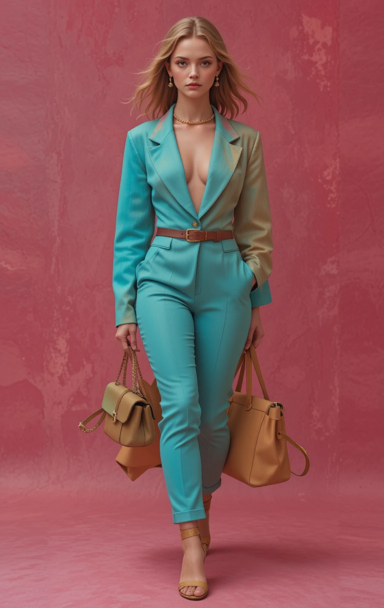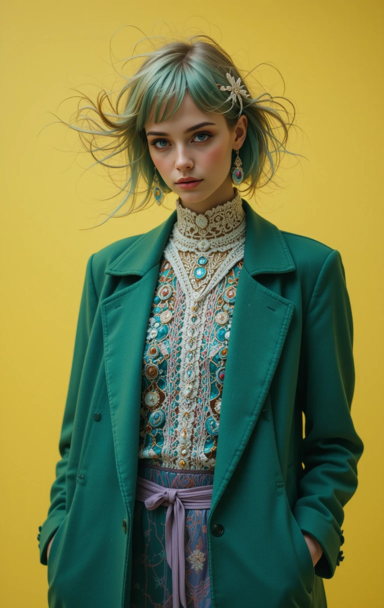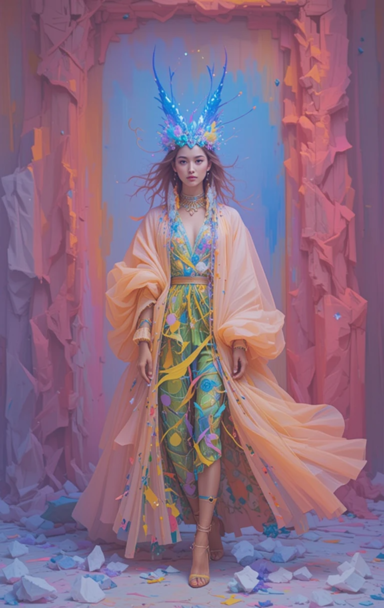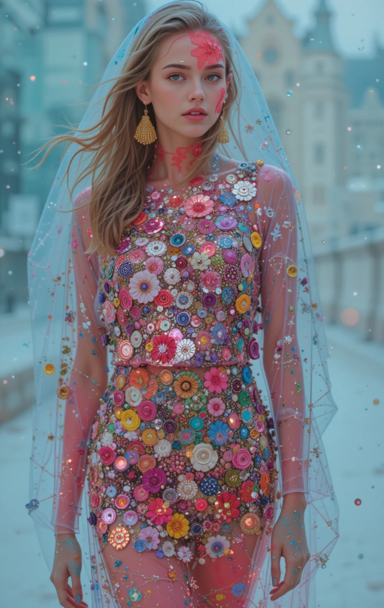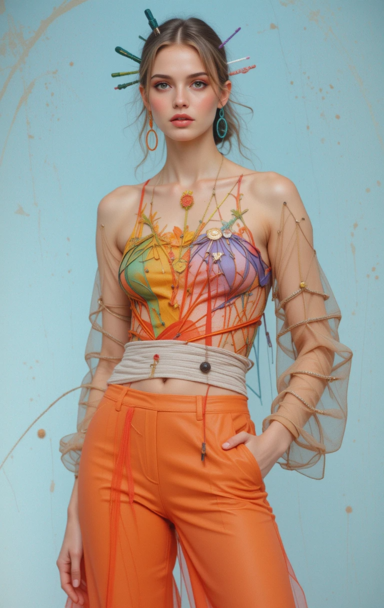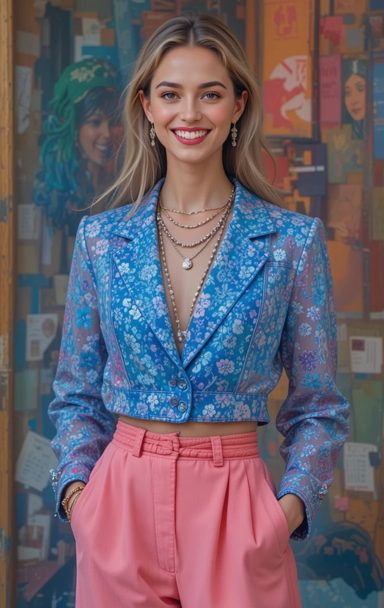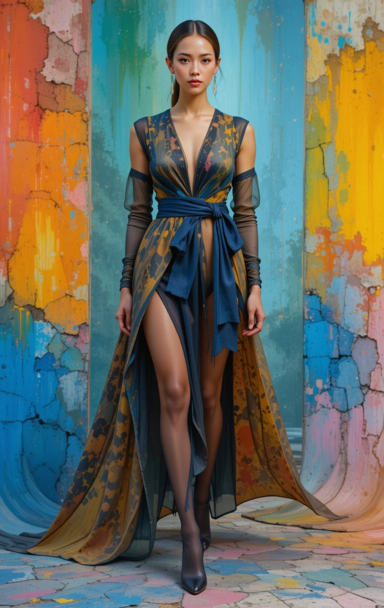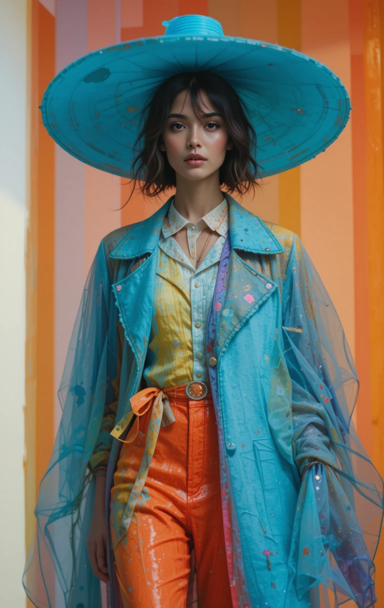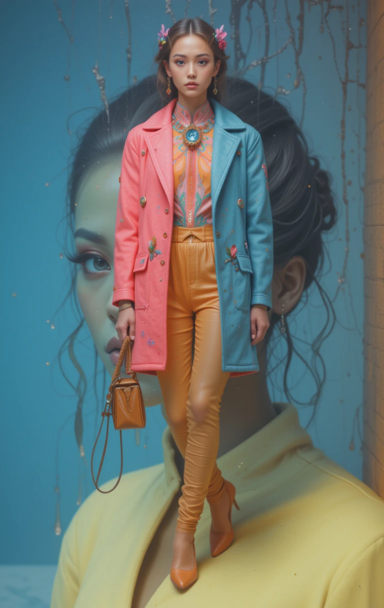The Power of Color: How Women’s Fashion Is Using Color Psychology to Make a Statement
Color is a language that speaks directly to the soul. It’s a form of non-verbal communication that transcends cultures, emotions, and ideologies. In the world of fashion, color is not just a visual element—it’s a powerful tool used to express identity, emotion, status, and power. When we think about fashion, we often think about the cut, fabric, and structure of clothing. However, the true essence of any outfit often lies in the color choices made. Whether you’re wearing a vibrant red dress or a muted pastel blouse, your choice of color can make a bold statement about who you are, what you’re feeling, and even how you want to be perceived.
In this article, we explore how women’s fashion is using color psychology to make a statement. Color psychology refers to the study of how colors affect human emotions and behavior. It is widely used in marketing, branding, and art. However, the fashion industry has increasingly recognized the importance of color as a tool for self-expression and empowerment. From runway shows to street style, color is becoming a key element in communicating a message, influencing moods, and even shaping societal narratives. Let’s explore how women’s fashion is tapping into this power and how color is influencing the way we dress and perceive ourselves.
Understanding Color Psychology in Fashion
Before diving into how women’s fashion uses color to make statements, it’s important to understand the psychology behind color. Different colors evoke different emotions and have distinct meanings. For centuries, color has been used in various cultural contexts to communicate messages—red for love or danger, blue for tranquility or sadness, yellow for happiness or caution. These meanings can be linked to personal and cultural experiences, which are why color choices can be so deeply impactful.
In fashion, color is a tool that not only influences the wearer’s mood but also the perception of others. Think of it as the emotional armor you wear on a daily basis. The color of a piece of clothing can make someone feel powerful, calm, confident, or even vulnerable. By understanding the emotional impact of colors, designers and consumers alike can use color to enhance or alter their desired persona.
1. Red: Power, Passion, and Confidence
Red is a color that commands attention. It is often associated with strong emotions such as love, passion, and desire. However, red is also a color that symbolizes power, energy, and confidence. In the context of fashion, wearing red can make a woman feel more assertive and bold. It is no surprise that red has become a go-to color for statement pieces, particularly in business attire, evening wear, and special occasions.
Red dresses, coats, and accessories often evoke a sense of dominance and authority. When a woman chooses red, she may be signaling her confidence and willingness to stand out. In fact, studies have shown that people are more likely to pay attention to someone wearing red, as it is a color that naturally draws the eye. Whether it’s the striking scarlet of a Valentino dress or the rich burgundy of a winter coat, red is a color that speaks to both the wearer and the onlookers.
In the workplace, red can be used strategically to project confidence and leadership. A red blazer or a red lip can elevate a professional outfit, signaling that the wearer is both competent and in control. In romantic contexts, red is often seen as the color of love and attraction. It is no surprise that red is a favorite color for lingerie, evening gowns, and date-night outfits.
2. Blue: Calm, Trustworthiness, and Professionalism
Blue is often regarded as the color of calm, stability, and trustworthiness. It is no coincidence that blue is one of the most common colors seen in professional settings. From navy suits to cobalt dresses, blue evokes a sense of reliability and professionalism, which is why it’s often the color of choice for corporate attire and business meetings.
However, blue is also associated with tranquility and emotional calmness. Lighter shades of blue, such as baby blue or powder blue, are particularly calming and often have a soft, serene effect. These shades can be found in feminine dresses, blouses, and accessories, providing a subtle yet sophisticated appearance.
In addition to its professional and calm qualities, blue is often associated with depth and intelligence. Whether it’s a midnight blue gown at a gala or a navy blazer in the office, blue is versatile enough to convey both elegance and authority. Women who choose blue often want to communicate a sense of trustworthiness and composure, which is why it is a popular choice for interviews, public appearances, and occasions where confidence is key.
3. Yellow: Optimism, Joy, and Creativity
Yellow is a color that radiates positivity, joy, and optimism. It’s often seen as a color of sunshine and warmth, and it has a way of instantly lifting one’s mood. In the context of fashion, yellow is a statement color that conveys energy and enthusiasm. Whether it’s a bright lemon yellow sundress or a mustard yellow cardigan, this color exudes happiness and vibrancy.
Yellow can also signify creativity and intellect. It is no coincidence that many artists, designers, and creators incorporate yellow into their wardrobe, as it stimulates the mind and encourages innovative thinking. In fashion, yellow is a great choice for those who want to stand out and create an uplifting and approachable vibe. It’s often used in summer collections and casual wear to give off an easygoing, carefree attitude.
However, yellow can also have a warning connotation, as it is sometimes associated with caution or anxiety. For instance, a woman might wear a muted or pale yellow to convey a sense of gentleness or modesty, whereas a bright yellow might be used to express boldness and joy. The versatility of yellow allows it to be playful and serious, depending on the shade and context in which it’s worn.
4. Green: Growth, Balance, and Rejuvenation
Green is the color of nature, growth, and renewal. It is often associated with balance, calmness, and healing, making it an ideal color for fashion items that are meant to provide comfort or peace of mind. Women who wear green often wish to convey a sense of inner peace, harmony, and balance, as this color has a soothing effect on both the wearer and the observer.
Green also signifies prosperity and abundance, making it a popular color choice for those seeking to convey financial success or a connection to nature. From olive green jackets to emerald green gowns, green can be both earthy and sophisticated, depending on the shade. Darker greens like forest green evoke a sense of luxury and timelessness, while lighter greens like mint or sage are often used for casual, laid-back looks.
Moreover, green is considered a color of renewal, which is why it is often chosen for spring collections and eco-friendly brands. The connection between green and nature also makes it an appealing color for sustainable fashion, as it evokes a sense of responsibility and care for the environment.
5. Black: Elegance, Mystery, and Authority
Black is often considered the most powerful and versatile color in fashion. It has a long history of being associated with sophistication, elegance, and authority. The little black dress (LBD) has become a timeless symbol of understated glamour and refinement, while black suits and tailored jackets are staples in corporate attire.
In color psychology, black is seen as a color of mystery and depth. It can convey a sense of sophistication, making the wearer appear more authoritative and confident. At the same time, black is also associated with a certain level of detachment or protection, as it can obscure emotions and create a sense of anonymity. Many women choose black for formal events, cocktail parties, or professional settings because it exudes power and poise.
However, black can also be seen as a color of mourning or sadness, depending on the context in which it is worn. This duality is one of the reasons why black is so versatile—it can be both a statement of strength and an expression of vulnerability.
6. Pink: Femininity, Softness, and Playfulness
Pink is traditionally associated with femininity, softness, and nurturing. It evokes feelings of warmth, love, and comfort, which is why it is often seen in romantic and casual settings. From pastel pink dresses to fuchsia accessories, pink is a color that can be both playful and elegant, depending on the shade and application.
Light pinks, such as blush or powder pink, are often linked to innocence and tenderness. They are commonly used in bridal fashion, maternity wear, and feminine loungewear. On the other hand, vibrant pinks like hot pink or magenta can convey a sense of boldness and playfulness. These shades are often seen in casual wear, evening outfits, or summer collections.
Pink has also been redefined in recent years as a symbol of empowerment and strength. In modern fashion, pink is no longer seen solely as a “girly” color, but as a bold statement of individuality and confidence. Designers like Valentino have embraced pink in a variety of shades, creating a sense of empowerment and luxury.
7. White: Purity, Freshness, and Simplicity
White is the color of purity, cleanliness, and simplicity. It is often chosen for formal occasions such as weddings and graduations, where it symbolizes new beginnings and fresh starts. White garments, such as blouses, dresses, and coats, convey a sense of clarity and openness, making the wearer appear calm and composed.
In addition to its association with purity, white can also be seen as a symbol of sophistication when paired with other neutral tones like beige, gray, or navy. White is often used in minimalist fashion and capsule wardrobes because of its timeless appeal and its ability to be paired with almost any other color.
While white is traditionally associated with innocence, it can also represent strength and confidence. Women who wear white often want to project an image of clarity, freshness, and authority.
Conclusion: Harnessing the Power of Color in Fashion
Color is a tool of immense power in fashion, capable of influencing emotions, creating connections, and making powerful statements. Through color psychology, women’s fashion has learned to harness the emotional impact of color to communicate messages ranging from confidence and professionalism to creativity and warmth. Whether through bold, attention-grabbing hues like red and yellow or more subdued tones like blue and black, color allows women to express themselves and shape how they are perceived by others.
In a world where self-expression is more important than ever, the strategic use of color in fashion offers a unique opportunity to make a statement. Women who understand the power of color can use it to reflect their mood, their values, and their identity, creating an ensemble that speaks volumes without saying a word. As fashion continues to evolve, the influence of color psychology will remain an essential tool for anyone looking to make a lasting impression.

